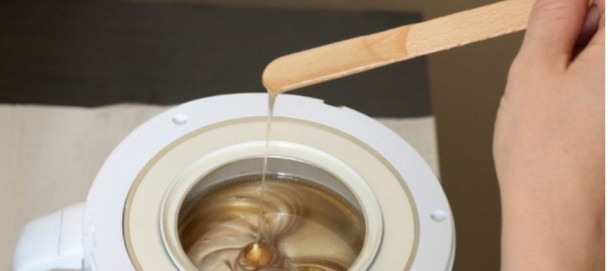
Since the beginning of the hair removal trend, thicker and darker hair has been one of the 'consequences' that is feared the most.
An abundance of research proves that hair removal has absolutely no influence on hair growing back coarser. No matter how many times aestheticians tell clients this, the myth is still widely spread.
It is sometimes the case that hair may appear thicker when it grows back after being removed, especially after shaving for the first time. However, it technically doesn't become more coarse—it's just biology, how our bodies and our hair follicles work. In fact, some hair removal methods like waxing do the complete opposite, it often makes hair grow back thinner and weaker over time.
Waxing
Waxing involves applying heated wax to the area following the direction in which the hair grows. A thin strip of muslin fabric pressed on the wax creates a bond. The therapist pulls the muslin strip away in the opposite direction of the hair growth, removing the hair.

Benefits
Advertised
Waxing has benefits. Unlike shaving, which removes hair at the surface level of the skin, waxing removes hair below the surface level, so hair that is waxed takes longer to grow back and, over time, you will have less hair. You also don't risk cutting yourself while shaving, which can lead to infection.
We are shedding and replacing hair all the time
We all shed or lose some hair every day. We have over 5 million hair follicles that are responsible for hair growth, all working in cyclic stages; first, the hair grows from the root of the follicle as it gets pushed out to the outer layer of the skin (Anagen phase). The span of this phase depends on genetics and body zone; the Anagen phase is much longer in scalp hair than leg hair, for example. Once this stage finishes, the follicle renews itself and "cuts" the hair (Catagen phase). It then finally enters the third phase, where follicles rest and hair sheds before the cycle starts again and a new hair grows (Telogen phase).
Less hair
One of the long-term advantages of waxing, or other methods that pull hair from the root, is that over time, it weakens the hair follicle, making it less productive. The immediate effect of waxing is damage to the hair bulb, which provides nourishment for newly forming and established hair. Repeated waxing causes the hair bulb to become permanently damaged. Weak follicles grow weak hairs and eventually, no hair at all. It's a process that may take years, but a benefit you would not get with shaving or creams that cut off the hair at the surface of the skin.
Hormonal Factors
Advertised
The main reason for hair changing its depth of pigment and thickness in certain areas of the body is down to hormonal changes (puberty, age, menopause, PCOS), your DNA and in some cases or medication. Your hairs' roots are approximately four layers lower than the skins surface. Nothing that was used topically on the surface of the skin can affect the pigment, thickness and stimulate hair growth. It logically just can’t.



